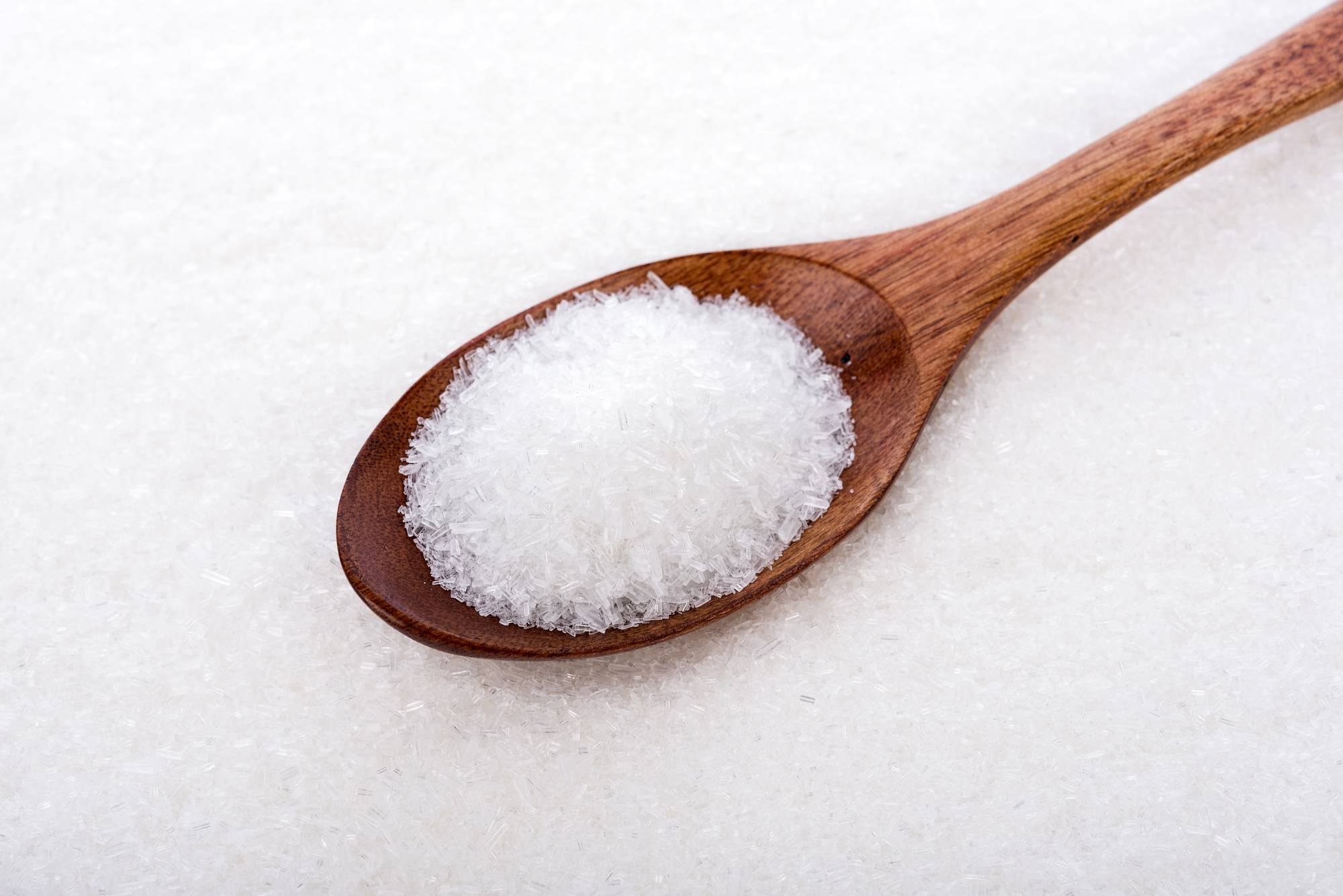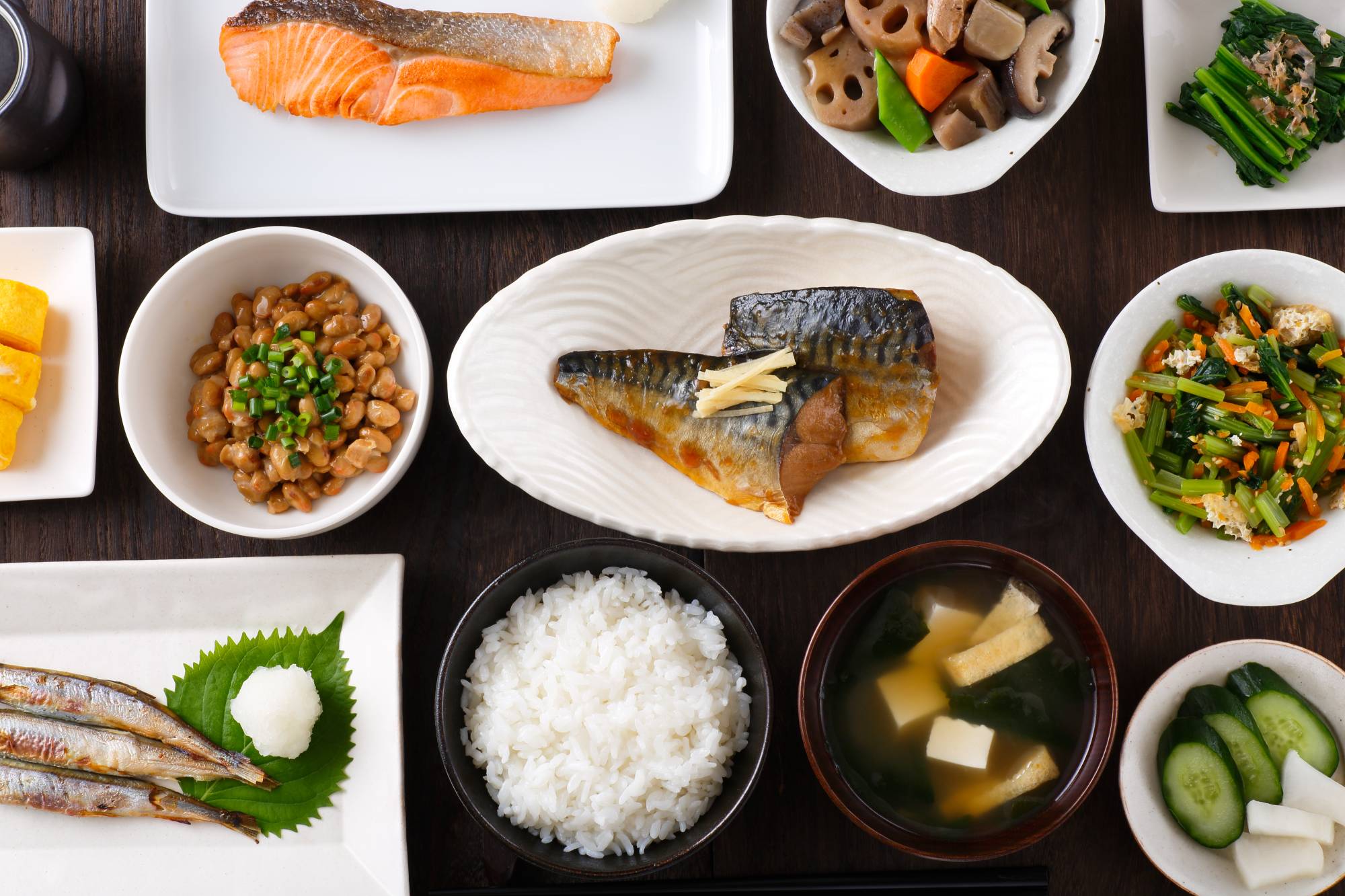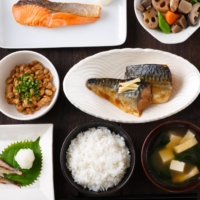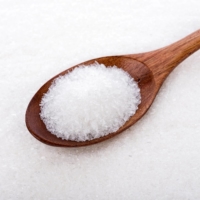Washoku, Japan’s traditional dietary culture, was added to UNESCO’s Intangible Cultural Heritage list in 2013. Washoku has since grown rapidly into an international trend, and extensive research has been conducted into its health benefits.
The National Cancer Center Japan defines it as the “Japanese dietary pattern” and uses the eight-item Japanese Diet Index (JDI8), which scores the intake of rice, miso soup, seaweed, pickles, green and yellow vegetables, seafood, green tea and beef/pork, to investigate associations with mortality. Its studies have shown that groups with higher JDI8 scores have a 14% lower overall mortality rate and 11% lower mortality rates for both cardiovascular and heart disease.
The center also highlighted an inverse association between overall mortality and the intake of widely consumed fermented soy foods. Another intriguing finding is the possible enhancement of resistance to cardiovascular disease by frequent nattō (fermented soy beans) intake.
These studies scientifically back the health benefits of washoku, despite some negative aspects, such as high sodium intake. According to the National Health and Nutrition Survey 2019, average daily sodium intake among Japanese is 10.9 grams for males and 9.3 grams for females, whereas the Ministry of Health, Labor and Welfare’s recommendation is 7.5 grams and 6.5 grams.
Umami demystified
Kikunae Ikeda (1864 to 1936), an academic peer of Ajinomoto founder Saburosuke Suzuki, was a pioneer in the study of physical chemistry in Japan who was long concerned with the problems of the traditional Japanese diet. In 1908, he found that the savory flavor of kelp broth comes from the amino acid glutamate. In 1909, Suzuki launched a commercially produced glutamate called Aji-no-moto umami seasoning. Ikeda’s findings led to the discovery of umami, the fifth basic taste, unique from sweet, salty, sour and bitter.
While umami offers health benefits and can be found in many glutamate-rich foods, its purest form is MSG, a key component of Aji-no-moto umami seasoning. Although MSG has long been misunderstood in Western society, recent scientific findings validate its safety and health benefits. One study shows that MSG has two-thirds less sodium than table salt; when used as a partial replacement for salt, it can reduce sodium intake by up to 61% in home cooking and 50% in packaged foods, without compromising taste.

Delicious salt reduction
Ikeda hoped to help people enjoy better health with nutritious, umami-rich foods. Embracing his spirit, Ajinomoto aims to unlock the power of amino acids, one of the body’s fundamental building blocks, to address health issues associated with dietary habits and aging. One of the target outcomes of Ajinomoto’s vision is to help extend the healthy life expectancy of 1 billion people by 2030. “As we offer products in over 130 countries, this target is now within reach,” Executive Officer in charge of Sustainability and Communications Chika Morishima said.
To achieve this outcome, Ajinomoto positions “delicious salt reduction” as one of its key initiatives, launching the Smart Salt Project in July 2020 to encourage sodium reduction through the use of seasoning products. In this project, trained employees help introduce umami and other seasonings in daily cooking through videos and recipes via online media, raising consumers’ awareness while addressing their concerns about low-sodium products, including taste and usability. To this end, the group has been providing nutrition education, including e-learning courses, to its employees worldwide to deepen their knowledge of healthy diets and pass it on to their communities.
Concerning the project’s prospects, Morishima said, “In countries such as Thailand, Indonesia and Brazil, the sales growth rate of low-sodium products exceeds that of regular products. People are becoming more aware of the need to reduce sodium intake, but some are more proactive than others. In that sense, we can do more to dispel the negative image of low-sodium products and introduce easier cooking methods and recipes.”
The Ajinomoto Group currently offers a variety of low-sodium products in five countries outside Japan. In consideration of local food cultures, group companies work closely with local businesses and consumers to optimize products based on available ingredients, cooking styles and food preferences. This close attention derives from their “Nutrition Without Compromise” policy, which commits to providing accessible, affordable products that can enhance the nutritional value of meals without detracting from taste or local food culture.

Acting on washoku boom
Washoku is popular around the world, as evidenced by the explosive growth in restaurants serving this cuisine in recent years. Words like umami and dashi have found their place in the English language, and interest in and knowledge of washoku have grown by leaps and bounds over the past decade.
To turn this trend into a dietary habit that can deliver the true health benefits of washoku, it will be crucial to promote broader knowledge of the cuisine, such as the benefits of consuming fermented soy foods, or the potential role that umami can play in controlling sodium intake. Japan’s government and businesses view the Tokyo Nutrition for Growth Summit as a valuable opportunity to share their knowledge and contribute to solving nutrition issues around the world.
With heart disease and strokes taking an estimated 3 million lives per year, the World Health Organization has warned against overconsumption of sodium and set the goal of reducing global sodium intake 30% by 2025. As the development of washoku and the major contributions of Japan’s innovative food industry demonstrate, “You are what you eat” is no longer just proverbial advice. It is an essential mindset for individuals to achieve a healthy lifestyle and for the global community to thrive together.
This page is sponsored by the government of Japan.
Download the PDFs of this Tokyo Nutrition for Growth Summit 2021























With your current subscription plan you can comment on stories. However, before writing your first comment, please create a display name in the Profile section of your subscriber account page.